The Massachusetts Department of Elementary and Secondary Education (DESE) is committed to supporting educators in using evidence-based early literacy practices. The DESE 2019 Literacy Strategic Planidentifies two focus areas of instructional support for English language arts and literacy: high-quality core instruction and the use of evidence-based practices for early literacy skills. In spring 2021, the Region 1 Comprehensive Center (R1CC) conducted an online survey of educators in Massachusetts to better understand what early literacy curricula and practices look like in these classrooms. We received responses from 479 educators1 who taught grades K–3, primarily teaching in English. This blog highlights key findings from the survey and is intended to help educators reflect on the practices they are using in the classroom as well as any changes to their practice that could have a greater impact with their students. The findings are presented in three sections: literacy curricula and structure, literacy strategies, and literacy assessments.
As you review the results, consider the alignment between the practices used by the survey respondents and the early literacy practices you use in your classroom. This blog post ends with questions for educators to consider as you reflect on your own literacy instruction.
Who completed the survey?
The respondents were…
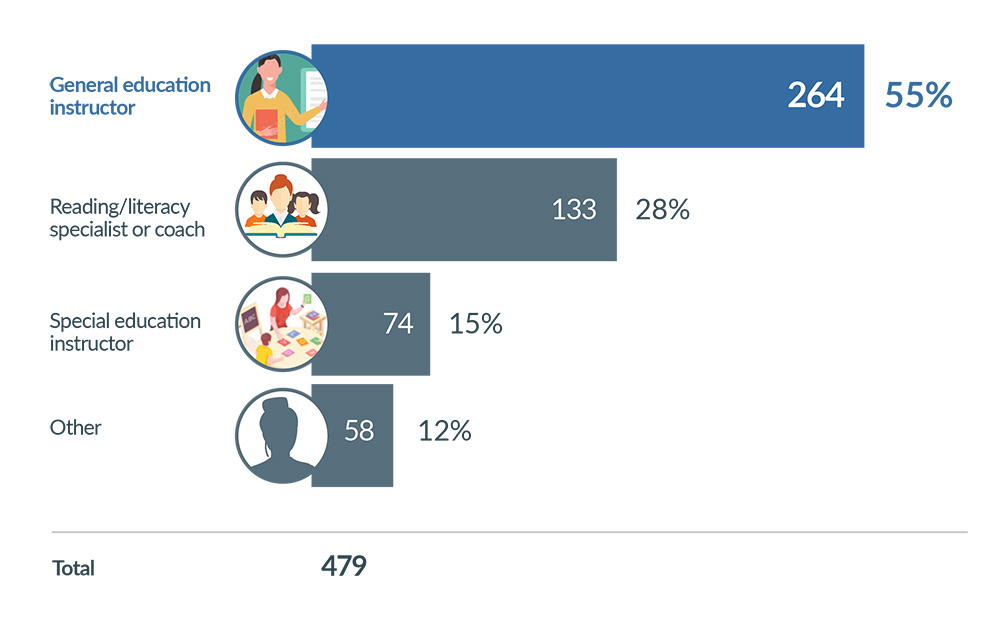
Literacy Curricula, Time Spent, and Skills
Seventy percent of educators reported using a mix of published curricular materials and teacher-created materials, and 5% of educators reported solely using teacher-created materials. Of the published curricular materials that teachers reported using, the most-used were Fundations, Reading A-Z, Lexia Core5 Reading, Heggerty Phonemic Awareness, Units of Study for Teaching Writing, and Fountas & Pinnell Classroom.
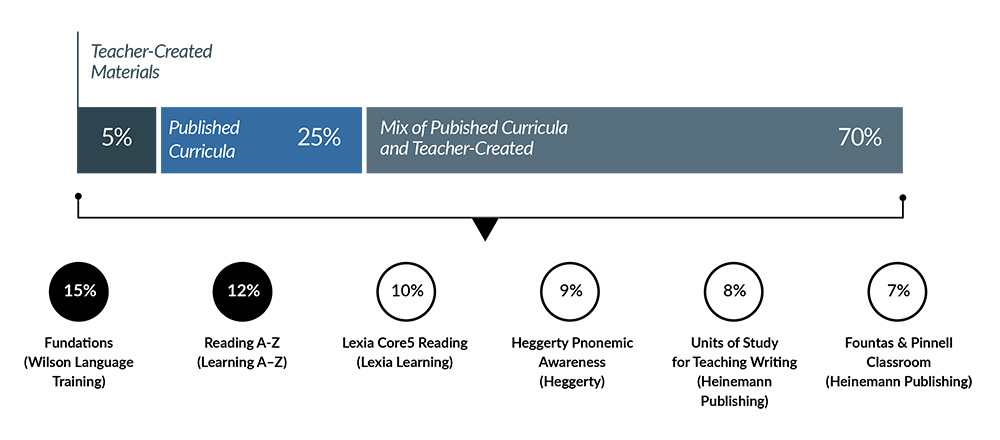
In a typical, in-person school year, 65% of educators reported spending more than 60 minutes a day teaching reading, and 86% of educators reported spending 31–60 minutes a day teaching writing.
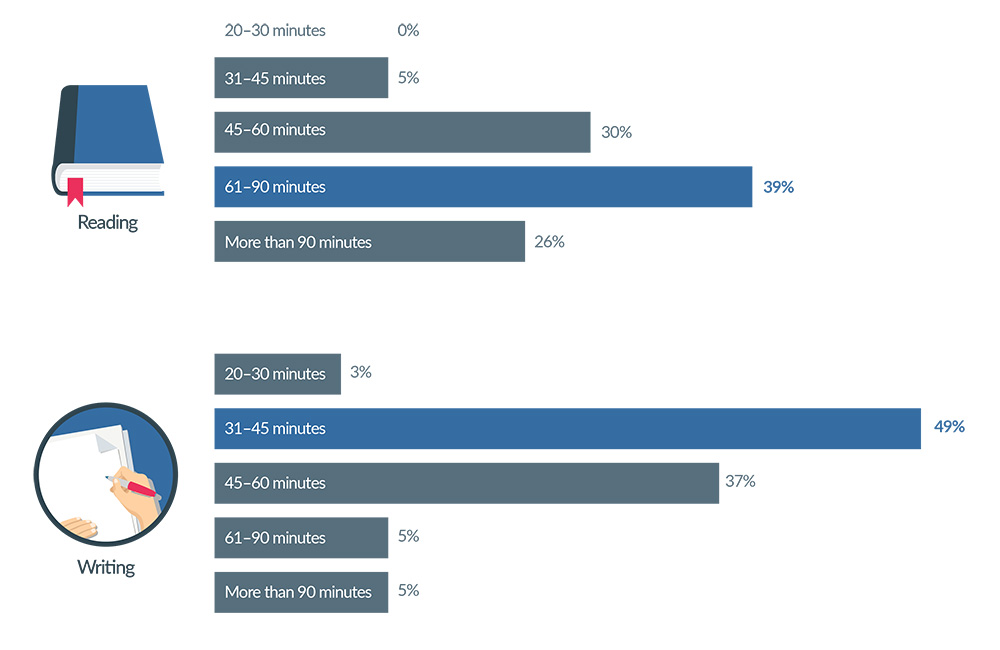
On average and over the course of a year, educators reported spending the following number of minutes on these skills during their daily literacy block:

Reading Instructional Strategies
Educators next indicated the extent to which they used specific literacy strategies. The following graphic lists these strategies in order of those they use “to a great extent.” The least-used strategy was Reading aloud a series of related texts on the same topic with the whole class, which was reported to be used “not at all” by 9% of respondents and “to a small extent” by 22% of respondents.
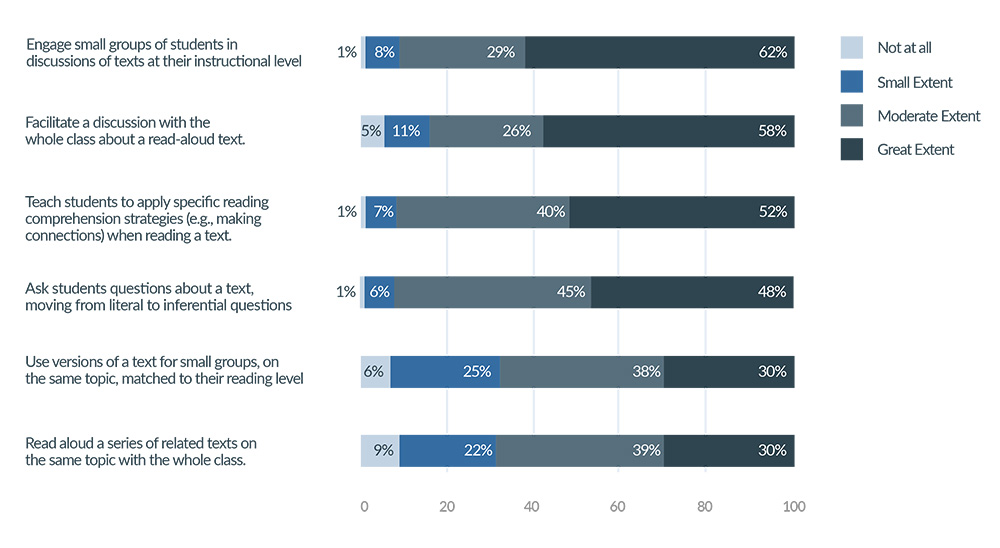
When asked about which reading fluency instructional strategies educators implemented with students, a majority of educators indicated they used the strategy Listen to individual students read sentences or texts aloud and follow with corrective feedback “to a great extent.” The following graphic lists other reading fluency strategies in order by those they use “to a great extent.”
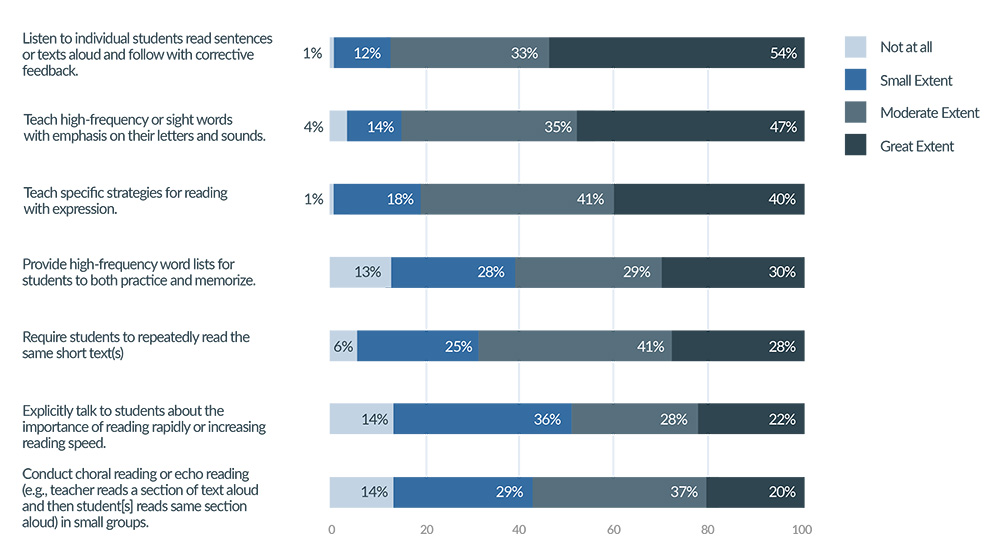
Reading and Writing Assessments
When asked how frequently they used different literacy assessments, educators reported:
- 61% use a standardized screener (DIBELS, STAR, MAP, AIMSweb) 3x/year
- 37% use a leveling assessment (Fountas & Pinnell benchmark assessment system, DRA) 3x/year
- 12% use a leveling assessment 2x/year
- 10% use a leveling assessment 4x/year
- 17% use running records monthly
- 15% use running records weekly
- 11% use running records biweekly
The survey concluded with asking educators how frequently they or another staff member assessed students who are not on track to meet grade-level standards. Educators most frequently identified assessing students biweekly (34%) or monthly (25%). They reported most frequently that another staff member assessed students every 8 weeks (28%).
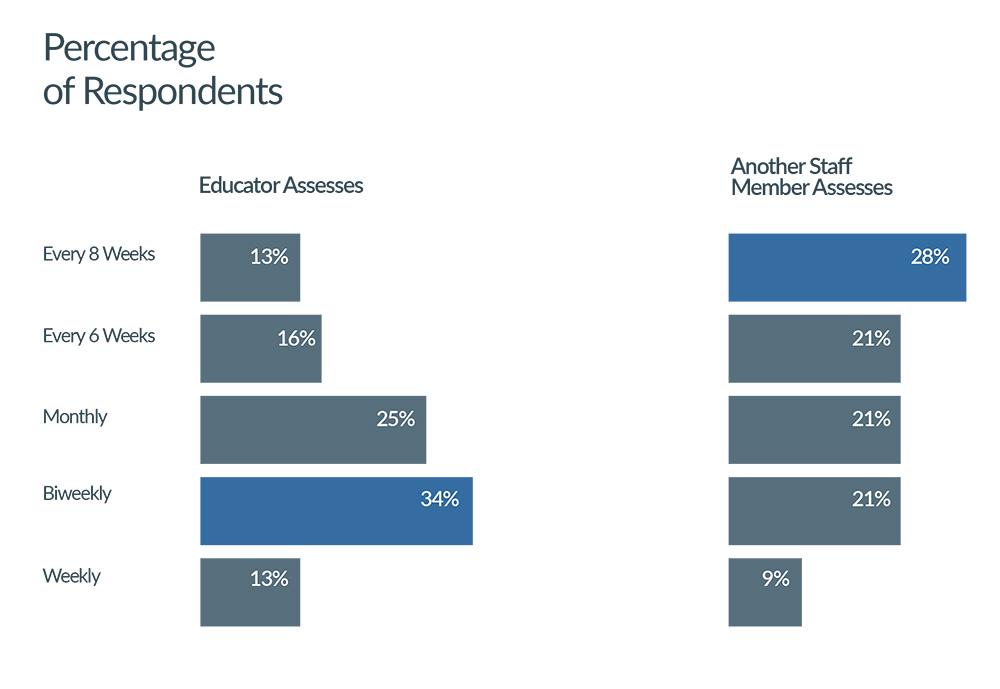
Reflection and Action Planning
After reviewing these findings, consider the following questions:
- What early literacy instructional practices are you currently using?
- How do these survey findings align with your early literacy instructional practices?
To learn about practices that have been researched and found to have a strong evidence base of their effectiveness in teaching K–3 literacy skills, please see the following resources:
- From the Institute of Education Sciences’ What Works Clearinghouse:
- From DESE: Mass Literacy Guide
Upcoming DESE Literacy Efforts
This survey is a part of the ongoing collaboration between DESE and the R1CC aimed at improving practice in literacy instruction in Grades K–3 in Massachusetts.
The R1CC team is also supporting Massachusetts’ efforts by developing a tool to assist school and district leaders in selecting high-quality reading interventions and literacy materials that best match their students’ needs.
Information about this and previous projects, or the upcoming Literacy Intervention Selection Tool, can be found on the R1CC website: https://region1cc.org/our-work/projects/supporting-districts-selecting-evidence-based-literacy-interventions-current
[1] A total of 479 respondents initiated the survey. Of these, 318 (66%) completed the entire survey.
The contents of this blog were developed under a grant from the Department of Education. However, those contents do not necessarily represent the policy of the Department of Education, and you should not assume endorsement by the Federal Government.